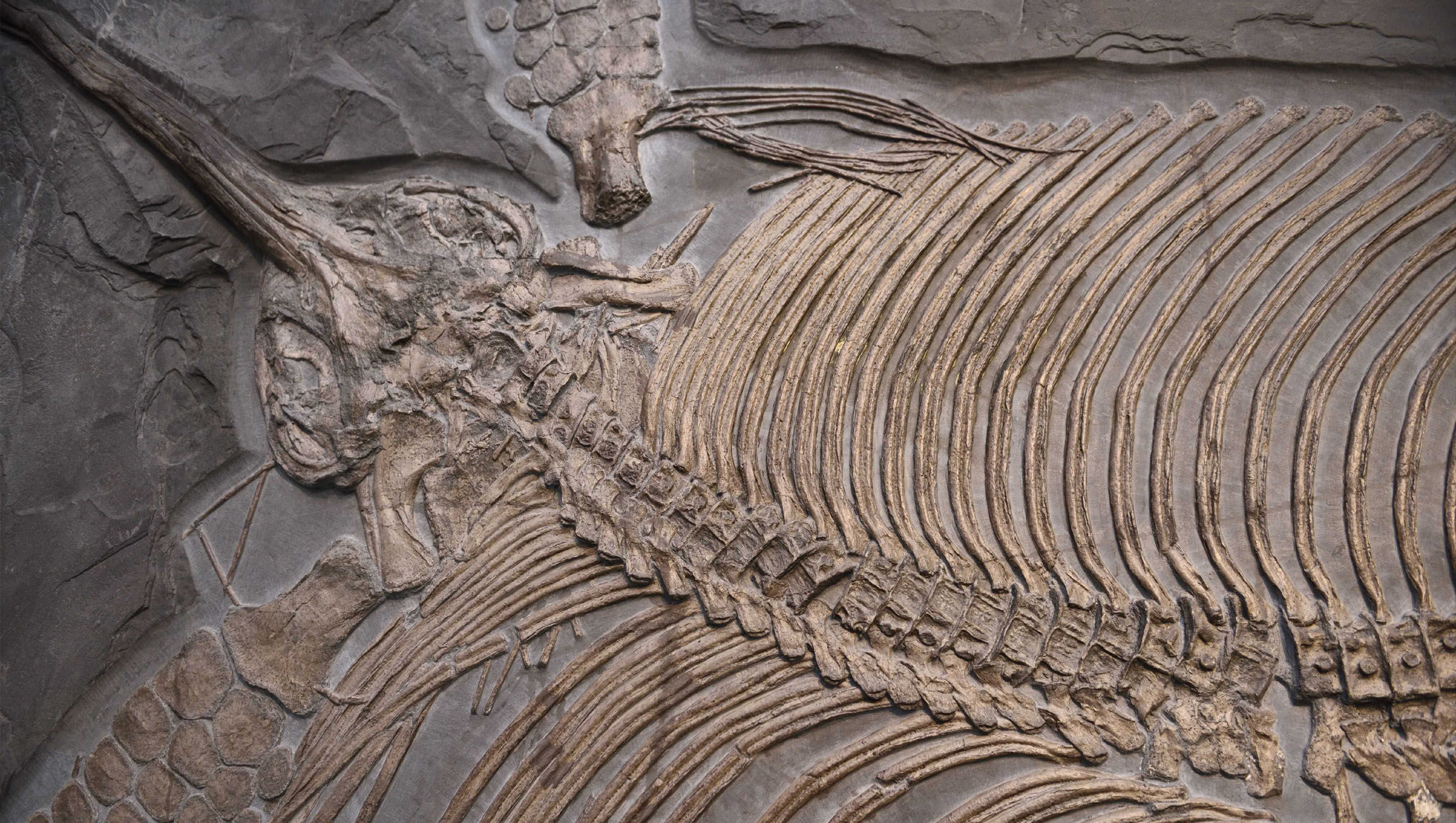Create a free profile to get unlimited access to exclusive videos, sweepstakes, and more!
This is what happens when you use a selfie stick to make a scientific discovery

There are many instruments used to make scientific discoveries, from picks and chisels to powerful hi-res electron microscopes. Now that honor can also go to a selfie stick.
It wasn’t a typical selfie stick that Russian paleontologist Nikolay G. Zverkov used to get a better angle. While at the Natural History Museum in London, he wanted to zoom in closer to the fossil of a 150 million-year-old Late Jurassic ichthyosaur, a prehistoric sea monster that resembled a deranged dolphin with bulging eyes and much scarier teeth. The skeleton had been in the museum for a century but suspiciously looked like a genus of ichthyosaurs Zverkov recognized. Because the glass case was mounted too high on the wall, he ingeniously attached his digital camera to a fishing rod and captured some photos that made a huge revelation.
Because Zverkov had seen eerily similar skeletons in Russia, he pulled this bizarre move to see whether they were really the same extinct creature. After emailing the photos of the fossil to paleontologist and Baylor University doctoral candidate Megan L. Jacobs, she realized its skeletal morphology matched that of ichthyosaurs found in the UK. She and Zverkov were able to prove that the specimen that had been hanging out in the Natural History Museum for so long was actually the same kind of ichthyosaur as the Russian and British specimens. This particular ichthyosaur, Nannopterygius enthekiodon, was thought to be rare until it was found to be much more widespread because of a photo taken with a selfie stick.
“Nikoly’s excellent detailed photos significantly expand knowledge of Nannopterygius enthekiodon,” Jacobs said. “Now, after finding examples from museum collections across the United Kingdom, Russia and the Arctic—as well as several other Nannopterygius species—we can say Nannopterygius is one of the most widespread genera of ichthyosaurs in the Northern Hemisphere.”
Ichthyosaurs (Eurhinosaurus pictured at top) were one of the fearsome marine reptiles that ruled the oceans for 76 million years. Nannopterygius enthekiodon, the first part of its scientific name literally meaning “tiny wing” in reference to its fins, was about 5 feet long, with its tail taking up half of its body length. This creature thrived in the warm and shallow waters that covered what is now most of Europe. Its sharp teeth were covered in cementum that prevented them from falling out, which explains enthekiodon, or “sheathed tooth.” Those teeth are thought to have clamped down on fish that also lived in the shallows. It must have had no problem chasing them, since its bones revealed it to be a fast, torpedo-shaped swimmer, an ambush predator that shot across short distances to snap up startled prey.
Zverkov and Jacobs recently published their findings in the Zoological Journal of the Linnean Society, where they state that N. enthekiodon was not nearly as rare as it had been previously assumed to be, and that another species of Nannopterygius, N. borealis, had been unearthed in the process of going through Russian specimens. Both species are related to the much larger ichthyosaur Opthalmosaurus. This carnivorous beast plunged so deep for a meal that some fossils reveal signs of it having suffered from the bends. With saucer eyes that were like night vision goggles, it navigated the eldritch depths of the ocean in search of the squid it craved.
So next time you go to a museum, remember to bring a selfie stick, because you never know what might be lurking there—even if it’s been dead for hundreds of millions of years.


























